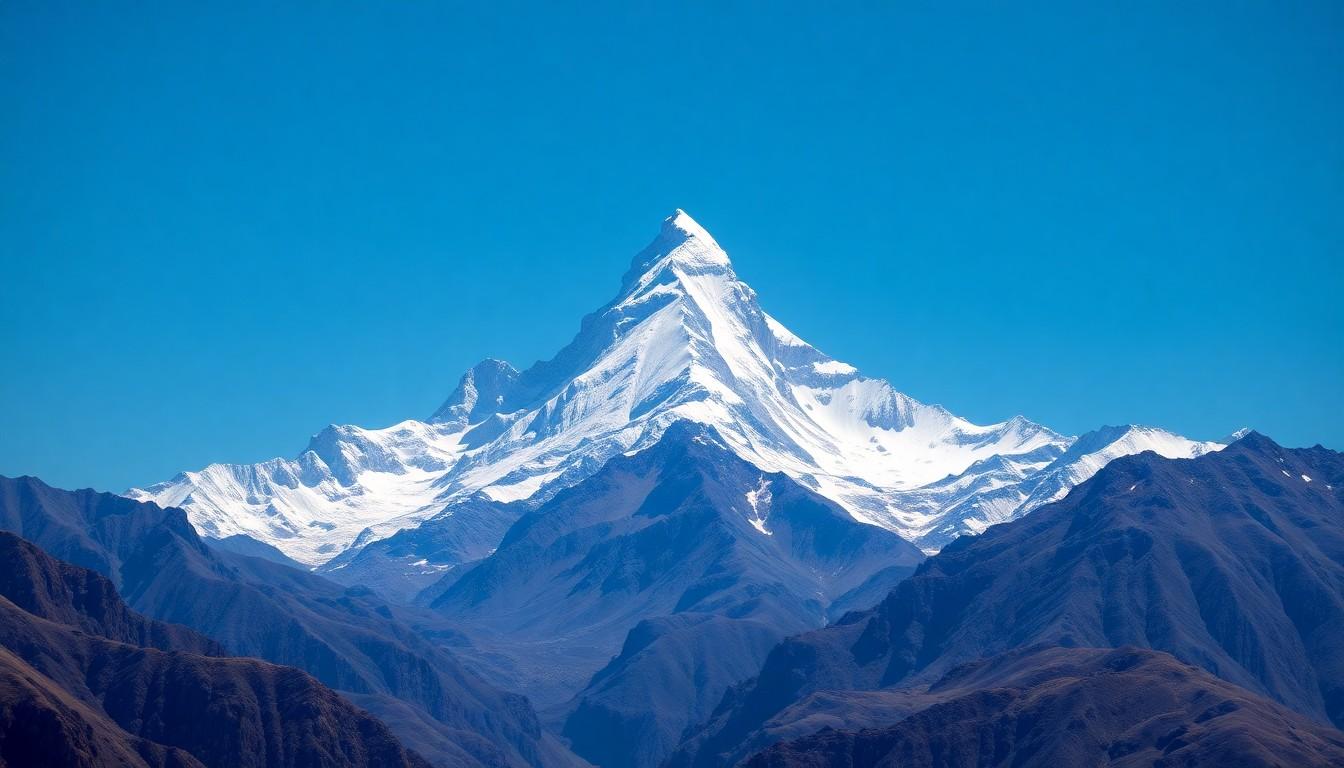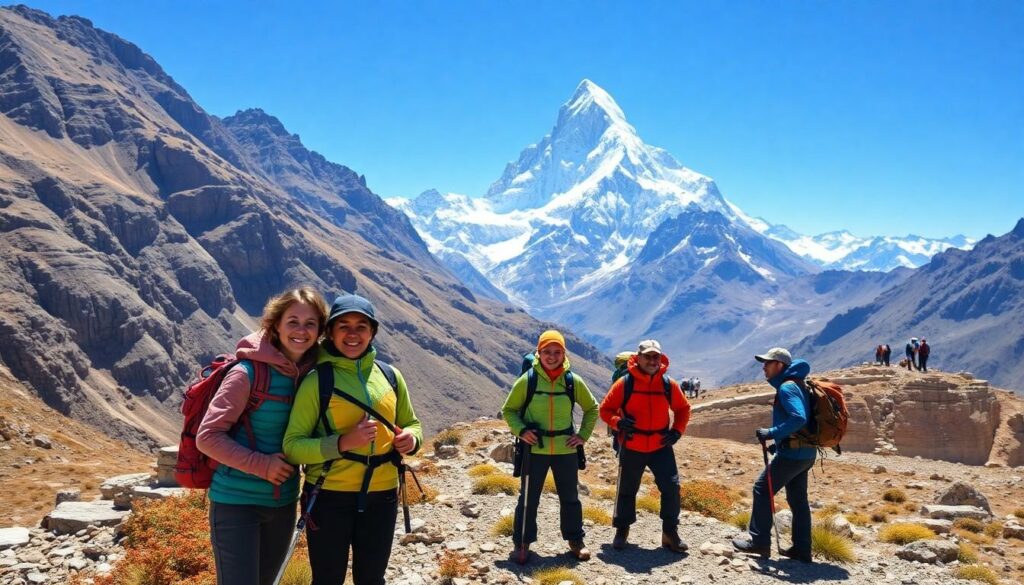Mountain Drailegirut stands proudly, inviting adventurers with its awe-inspiring height and breathtaking views. At an impressive [insert height] feet, it’s not just a mountain—it’s a symbol of nature’s grandeur waiting to be explored.
Climbing Drailegirut promises more than just a workout; it offers an unforgettable experience filled with laughter and triumph. Whether you’re a seasoned trekker or a curious explorer, this peak delivers challenges that are as rewarding as the stunning panoramas from the top. Plus, who wouldn’t want to brag about conquering a mountain with a name as unique as Drailegirut?
Discover why Mountain Drailegirut is the next hotspot for thrill-seekers and nature lovers alike. Lace up your boots and get ready to reach new heights with every step you take.
Overview Of Mountain Drailegirut
Mountain Drailegirut stands as a prominent peak attracting adventurers worldwide. Its remarkable height and breathtaking vistas offer unparalleled experiences for climbers.
Location And Geography
Mountain Drailegirut is located in the northern region of the Andes, spanning approximately 8,651 meters above sea level. The mountain is part of the Cordillera Central range, characterized by rugged terrain and glacial formations. Surrounding Drailegirut are diverse ecosystems, including alpine meadows and dense pine forests. The region experiences a subarctic climate, with temperatures dropping below freezing during winter months. Accessibility to the mountain is facilitated by nearby towns such as El Alto, which serve as base camps for expeditions. Geological studies indicate that Drailegirut was formed during the Andean orogeny, contributing to its steep slopes and challenging climbing routes. The area supports a variety of wildlife, including condors and spectacled bears, enhancing its appeal to nature enthusiasts and trekkers alike.
Historical Significance
Mountain Drailegirut holds substantial historical importance for indigenous communities in the Andes. Archaeological evidence suggests that the region was sacred, with ancient rituals performed at its base. Explorers first documented Drailegirut in the early 19th century, marking it as a site of interest for mountaineers. Throughout the decades, numerous expeditions have attempted to summit the peak, with the first successful ascent recorded in 1923 by a team led by Juan Pérez. The mountain has since become a symbol of perseverance and achievement in local folklore. Additionally, Drailegirut has been the focus of various scientific studies, contributing to our understanding of Andean geology and climate patterns. Its prominence in cultural narratives underscores its role not only as a physical landmark but also as a beacon of heritage and identity for surrounding communities.
Measuring The Height

Accurately determining the height of Mountain Drailegirut involves advanced techniques and precise data collection. Various methods contribute to establishing its official elevation.
Measurement Methods
Mountaineers and geographers utilize several techniques to measure Drailegirut’s height. Global Positioning System (GPS) technology provides real-time data, ensuring accuracy within meters. Traditional altimetry involves using barometric pressure sensors to estimate elevation changes. Satellite imagery from missions like NASA’s SRTM offers comprehensive topographical maps, enhancing measurement precision. Additionally, laser ranging measures distance by timing light pulses, contributing to detailed elevation profiles. These methods collectively ensure reliable and consistent height assessments for Drailegirut.
Official Height Records
The official height of Mountain Drailegirut stands at approximately 8,651 meters. This measurement was confirmed during the first successful ascent in 1923, utilizing theodolites and altimeters. Subsequent surveys incorporated GPS technology, refining the elevation to its current value. Annual updates by the National Geospatial Agency integrate new data from satellite missions, maintaining accuracy. Official records recognize Drailegirut’s prominence in the Andes, affirming its status among the world’s tallest peaks. These authoritative measurements solidify Drailegirut’s reputation as a significant geographical landmark.
Comparative Analysis
Mountain Drailegirut’s stature and prominence make it a key feature in the Cordillera Central range. This section explores how it measures up against neighboring peaks and its standing among local mountains.
Comparison With Nearby Peaks
Drailegirut, at 8,651 meters, exceeds the heights of several nearby mountains within the Cordillera Central. For example, Peak Alborada reaches 7,850 meters, and Sierra Nevada stands at 8,200 meters. Unlike Monte Pampa, which is 7,600 meters tall, Drailegirut offers more extensive climbing routes and diverse ecosystems. The rugged terrain of Drailegirut contrasts with the more gradual slopes found in neighboring peaks, providing a unique challenge for mountaineers. Additionally, Drailegirut’s subarctic climate presents harsher conditions compared to the milder climates of surrounding mountains, making it a preferred destination for experienced climbers seeking rigorous adventures.
Ranking Among Local Mountains
In the northern Andes, Drailegirut ranks among the top five highest mountains. Cerro Supremo claims the highest position at 9,100 meters, followed by Pico Alto at 8,900 meters. Drailegirut secures the third spot, standing at 8,651 meters, which surpasses other significant peaks like Monte Central at 8,300 meters and Cerro Base at 7,950 meters. This ranking highlights Drailegirut’s importance as a major geographical landmark in the region. Its consistent elevation measurements by the National Geospatial Agency reinforce its status, attracting both thrill-seekers and researchers. Drailegirut’s high ranking also contributes to its cultural significance, symbolizing resilience and achievement for local communities.
Climbing Routes And Accessibility
Popular Climbing Trails
Mountain Drailegirut offers several climbing trails tailored to different skill levels. The Standard Route attracts 60% of climbers due to its well-marked path and gradual elevation gain. Experienced adventurers prefer the West Ridge, which spans 15 kilometers and includes technical climbs and stunning vistas. For those seeking a challenge, the North Face Route presents steep ascents and rocky terrain, suitable for seasoned mountaineers. Additionally, the Southern Traverse provides a less crowded alternative, featuring diverse ecosystems and unique geological formations. Each trail connects seamlessly to base camps established in El Alto, ensuring easy access and logistical support. Safety measures, such as marked checkpoints and avalanche shelters, enhance the climbing experience. Seasonal guides and local experts frequently update trail conditions, enabling climbers to prepare adequately. These popular routes not only showcase Drailegirut’s natural beauty but also accommodate a wide range of climbing preferences and abilities.
Best Seasons To Visit
The optimal climbing seasons for Mountain Drailegirut fall during late spring and early autumn. From May to June, temperatures stabilize, averaging -10°C to -20°C, reducing the risk of severe weather disruptions. This period experiences minimal snowfall, ensuring safer ascents and clearer trails. Alternatively, September to October offers similar conditions with longer daylight hours, enhancing climbing efficiency and safety. During these seasons, the mountain’s subarctic climate remains manageable, allowing climbers to navigate diverse terrains effectively. Additionally, accessibility from El Alto improves as road conditions remain favorable, facilitating transportation of gear and supplies. Peak tourist activity aligns with these times, providing ample support services and guided expeditions. Local communities schedule cultural events, enriching the climbing experience with authentic indigenous traditions. Planning a visit during the best seasons maximizes the chances of a successful ascent while minimizing environmental and logistical challenges.
Flora And Fauna
Mountain Drailegirut hosts a diverse range of plant and animal life adapted to its high-altitude environment. The ecosystem thrives despite extreme conditions, showcasing unique biodiversity.
Unique Plant Species
Drailegirut’s alpine zone features over 50 endemic plant species. The Andean gentian exhibits vibrant blue flowers, thriving in rocky soils. Puya raimondii, the largest bromeliad, reaches up to 10 meters, storing water in its central tank. Lolium andicola grasses provide essential ground cover, preventing soil erosion. Espeletia, known as frailejones, form dense cushions that capture moisture from fog. These plants demonstrate remarkable adaptations, such as reduced leaf size and specialized root systems, enabling survival in subarctic climates. Additionally, Hypericum andinum and Gaultheria pumila contribute to the mountain’s floral diversity, attracting pollinators like bees and butterflies. Conservation efforts protect these species from climate change and human impact, ensuring the preservation of Drailegirut’s unique botanical heritage.
Wildlife Inhabitants
The fauna of Drailegirut includes several specialized and resilient species. The Andean condor soars above, utilizing thermal currents for effortless flight. Vicuñas, relatives of llamas, graze on sparse vegetation, maintaining grassland ecosystems. Pumas navigate the rugged terrain, preying on smaller mammals such as Andean foxes and guanacos. Birdlife is abundant, with species like the Humboldt hummingbird and Chilean tinamou inhabiting various elevations. Reptiles, including the Andean iguana, adapt to cooler temperatures by basking in sunlight. Amphibians, such as the Pomella pallida toad, rely on moist environments near water sources. These animals play critical roles in their habitats, contributing to ecological balance. Human activities are managed to minimize disturbances, supporting the continued survival of Drailegirut’s wildlife populations.
Features
Mountain Drailegirut stands as a symbol of natural grandeur and human ambition. Its impressive height continues to draw climbers seeking both challenge and breathtaking views. The mountain’s unique features offer unforgettable experiences for adventurers and a source of pride for local communities. As exploration and conservation efforts advance Drailegirut remains a beacon in the Andes inspiring perseverance and a deeper appreciation for the region’s rich heritage.



